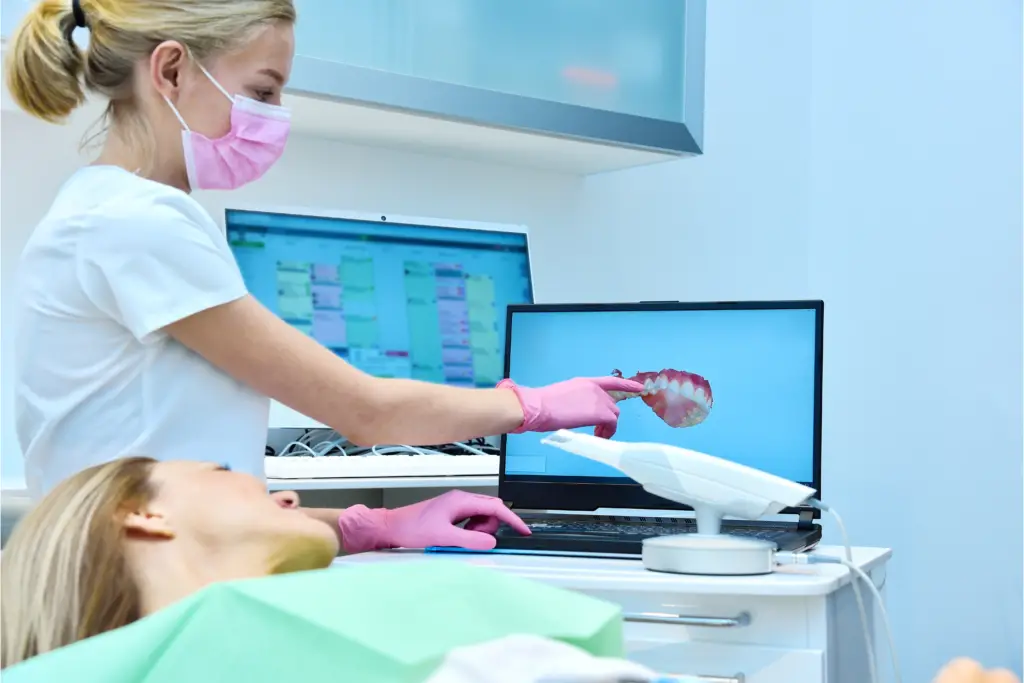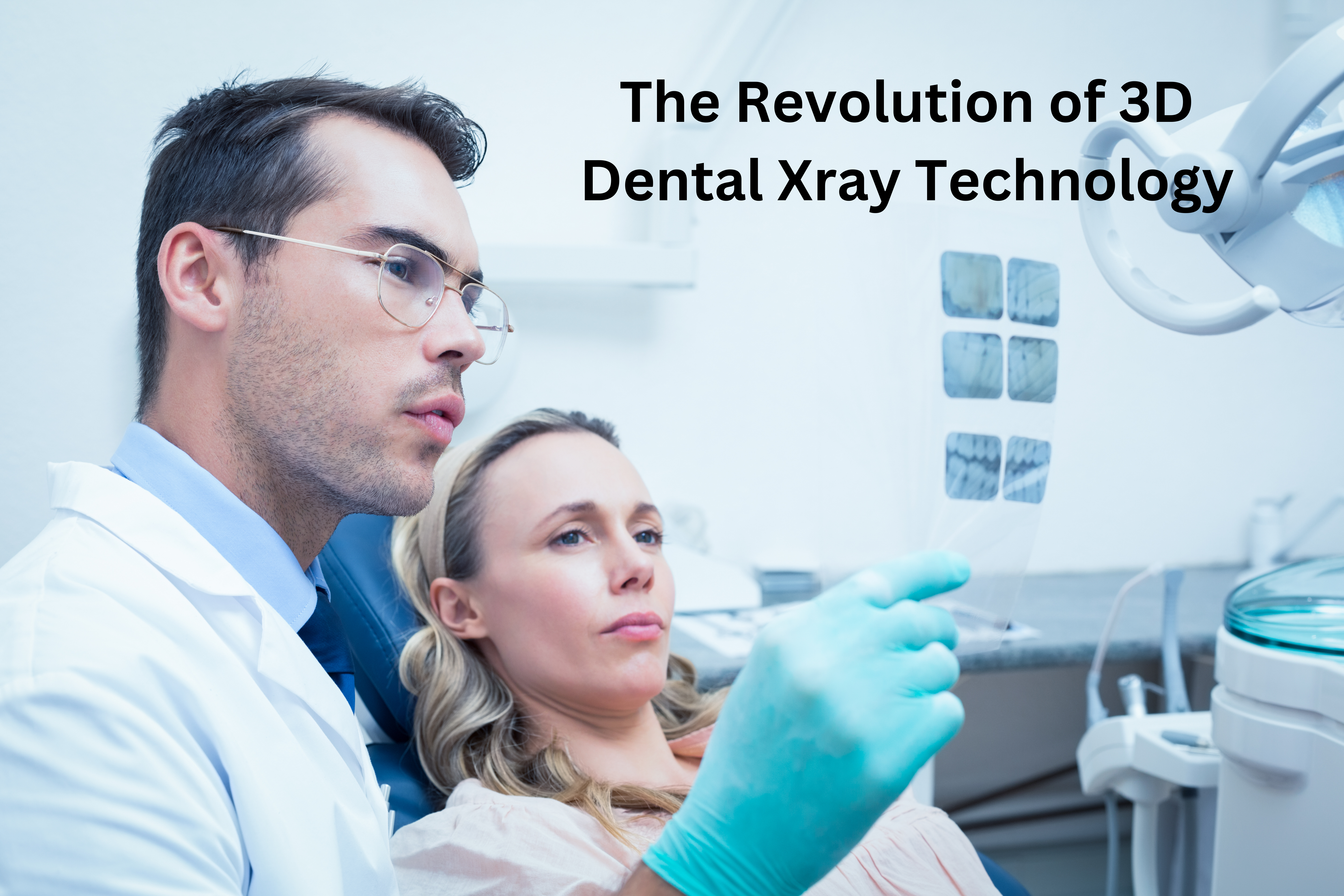The marvels of dental practice have seen massive advances in recent years, particularly with the inception of 3D Dental Xray Technology. Digital radiography has brought forth an era of precision, clarity, and safety in the realm of dental imaging.
So, let’s delve into the intricacies and benefits of this state-of-the-art technology.
What is 3D Dental Xray?
The 3D dental Xray, part of the modern dental radiography spectrum, and also referred to as Cone Beam Computed Tomography (CBCT), offers three-dimensional xray images of teeth, soft tissue, and bone in just one scan. This is a leap from the conventional two-dimensional xray images offered by traditional methods.
- Brief History Digital xray technology has made traditional film-based xrays a thing of the past. The evolution to 3D dental xray technology in the early 2000s marked a pivotal shift, offering more accurate and comprehensive views for dental professionals.
- Benefits of 3D Xrays Beyond the advantage of depth and clarity, this technology aids in effective treatment planning. With a wide range of views available, it’s easier for dentists to pinpoint issues, plan orthodontic treatment, and ensure the best possible care for patients.
Digital vs. 3D Dental Xrays
- Accuracy 3D imaging’s accuracy is unmatched. Traditional digital xrays, though efficient, offer flat images. The third dimension in 3D xray technology ensures that every nook and cranny of the dental structure is visible, paving the way for an accurate diagnosis.
- Time Efficiency Time is of the essence in a busy dental practice. Digital imaging, and especially 3D imaging, provides instantaneous results, a boon for both patient and practitioner.
How 3D Xray Works
- The Process Patients don’t need to bite down on uncomfortable films anymore. Instead, they comfortably sit while the xray beam from the machine revolves around them. This xray technology captures diverse angles and combines them into a single 3D image.
- Imaging Software The digital imaging software that complements the 3D dental xray technology is sophisticated. It enables dentists to manipulate xray images, offering a closer look at potential problem areas.
Safety Concerns and Precautions
- Radiation Exposure One might wonder about the radiation doses involved. Thankfully, the doses in 3D dental xrays are minimal and in many cases, even less than the radiation one might encounter in daily life.
- Protective Measures Safety is paramount. Thus, always ensure you’re draped in a protective lead apron. Dentists should also ensure their xray sources and machines undergo regular maintenance and checks.
Costs and Insurance
- Investment Worth The initial costs of 3D xray might be higher than digital xrays, but considering the depth of detail and clarity they provide, they’re a worthy investment. Early detection of dental issues can save costs in the long run.
Choosing the Right Dental Clinic
- Certifications and Training Not every clinic has the credentials for 3D imaging. Ensure that the chosen dental clinic has the necessary certifications and that their team is proficient in 3D dental imaging techniques.
Future of 3D Dental Imaging
- Advanced Innovations 3D dental imaging has just scratched the surface. With medical imaging evolving rapidly and the integration of AI, who knows, we might soon have 4D imaging, allowing us to view dental structures in real-time!
Panoramic Radiography vs. 3D Dental Xray
- A Holistic View Panoramic radiography gives a broad view of the entire oral structure, which is useful for a general overview. However, for intricate details and depth, 3D xray technology is the go-to.
- Applications While panoramic machines are widely used for orthodontic treatment and oral cancer screening, 3D dental xrays provide more detail for diagnostic applications, ensuring nothing is missed.

Conclusion
The revolution of 3D dental xray technology marks a significant stride in dental care. It amalgamates accuracy, efficiency, and depth, ensuring both dentists and patients have a clearer view of dental health.
FAQs:
What’s the difference between digital xrays and 3D dental xrays?
Digital xrays provide two-dimensional images, while 3D dental xrays provide detailed three-dimensional images.
How safe is 3D radiography?
Very safe. Radiation exposure is minimal, often less than daily environmental radiation.
Are 3D xray images instant?
Yes, one of the perks of digital x-ray technology, including 3D, is instantaneous imaging.
Is the 3D xray suitable for children?
Yes, with appropriate precautions and when necessary. Always consult with your pediatric dentist.
How frequently should one get a 3D xray?
It’s based on individual dental needs. However, unlike traditional xrays, 3D xrays aren’t usually taken as frequently due to their detailed nature.

